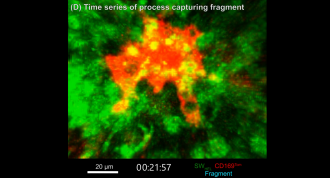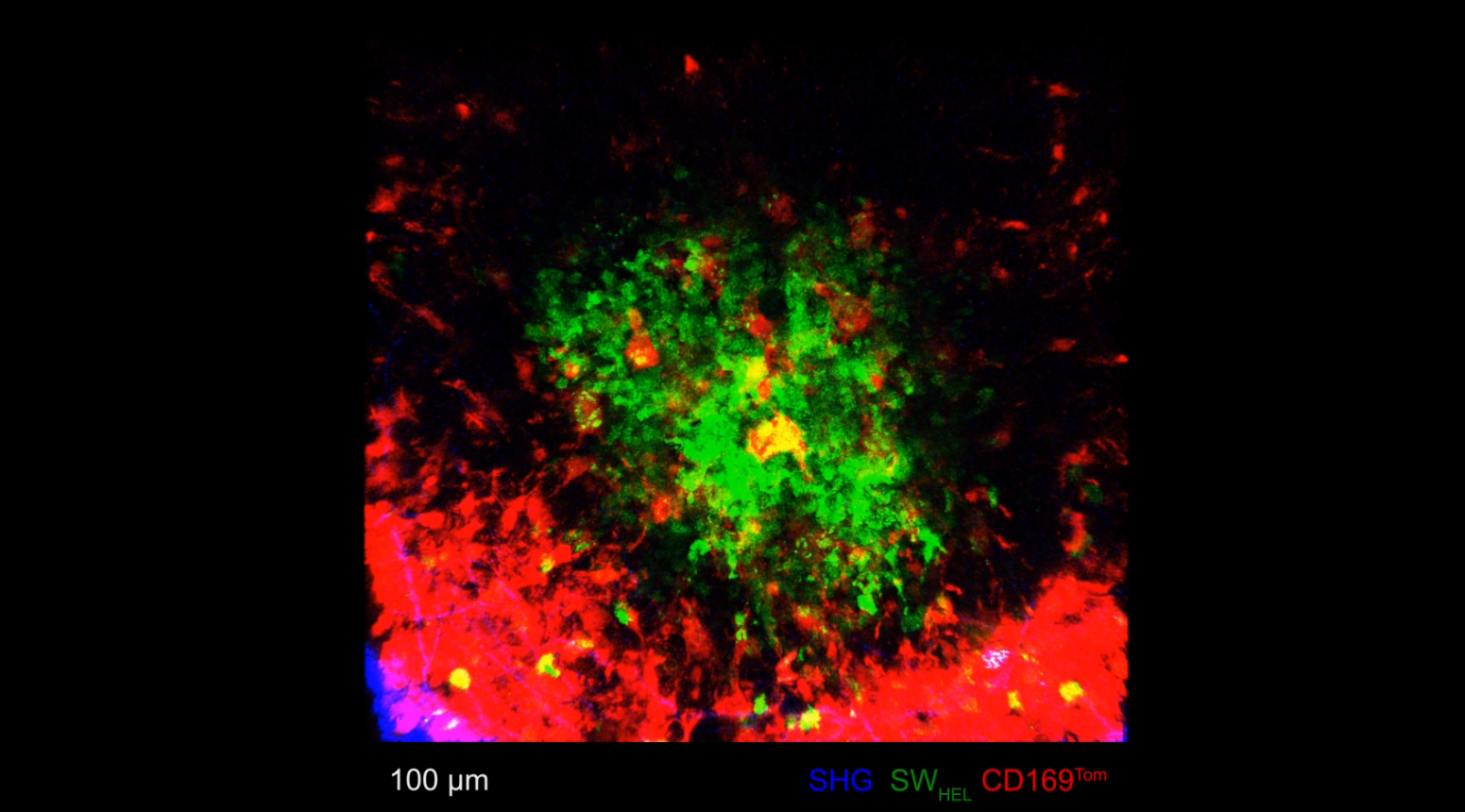Media release
From:
Australian researchers have made a fundamental discovery about what happens in lymph nodes, shedding light on the causes of immune-related diseases like lupus.
For almost 140 years, the origin and behaviour of an enigmatic cell type inside lymph nodes, called a tingible body macrophage, has remained a mystery. Now, for the first time, scientists at the Garvan Institute of Medical Research have tracked the cell’s lifecycle and function, with implications for our understanding of autoimmune disorders.
Autoimmune disease, which occurs when the immune system attacks the body, affects 5% of Australians and has a high chronic health burden worldwide, yet its causes are poorly understood.
“In living organisms, death happens all the time – and if you don’t clean up, the contents of the dead cells can trigger autoimmune diseases,” says lead author Professor Tri Phan, Head of the Intravital Microscopy and Gene Expression (IMAGE) Lab and Co-Lead of the Precision Immunology Program at Garvan.
Macrophages in many parts of the body are responsible for clearing foreign material like bacteria and viruses, but the researchers discovered that these tingible body macrophages, found inside lymph nodes, specialise in cleaning up the immune system’s own waste: the B cells that proliferate when we fight infection.
During an immune response, a massive number of B cells are made inside the lymph nodes and then tested for their ability to neutralise the infection. B cells that fail the test are destined to die, but on the way out, they can trigger the body to attack itself. The contents of these cells – especially those in the cell’s central nucleus – are inflammatory and can inadvertently activate some B cells to make antibodies against that waste, leading to autoimmunity. Removing this waste is therefore a critical housekeeping function.
The new research is published in the journal Cell.
Insights into a microscopic ecosystem
The scientists used state-of-the-art intravital imaging techniques at the ACRF INCITe Centre to observe how the macrophages form within the lymph nodes and how they behave in real time. Their analysis shows that, unlike other immune cells, tingible body macrophages do not chase their targets, but disperse evenly and lie in wait. When a dead or dying B cell comes close, the macrophage reaches out and wraps around the target, pulling it in to be ingested.
“We know so very little about tingible body macrophages because it was not possible until now, with next-generation two-photon microscopes, to get inside the microstructures inside the lymph nodes of a living animal and watch the cells in action in real time. That’s why it’s taken 140 years – from when tingible body macrophages were first described in 1885 – to get where we are now,” says Professor Phan.
“A lot of what we do is like shooting a David Attenborough documentary but at a microscopic scale – capturing the hidden life of these rare cells ‘in the wild’, to show how these cellular ecosystems work to keep us healthy,” Abigail Grootveld, PhD student at Garvan and co-first author of the study.
“This research is exciting because it helps us to understand causes of autoimmune conditions like lupus. Understanding why somebody gets the disease in the first place and why it keeps coming back, is an important step towards future treatments for these diseases,” says Wunna Kyaw, PhD student at Garvan and co-first author of the study.
In a disease like lupus, the immune system struggles to control the production of its fighter T cells and B cells. Their overactivity causes inflammation, autoantibodies and long-term damage throughout the body. This research shows that tingible body macrophages, with their B cell clean-up function, could be responsible for setting the chain of events in motion if they fail.
So far, the study has examined what happens with the macrophages in animal models of a healthy system. The researchers’ next step is to expand the experiment to an autoimmune model, to see if they can rescue the failing system and prevent autoimmunity at its root cause.
The research was carried out in collaboration with Associate Professor Oliver Bannard, Sir Henry Dale Fellow at the University of Oxford.
--ENDS--
This research was supported by the Australian Cancer Research Foundation, the Ernest Heine Family Foundation and the National Health and Medical Research Council.
Professor Tri Phan is a Conjoint Professor at St Vincent's Clinical School, UNSW Medicine & Health. Abigail Grootveld & Wunna Kyaw are graduate students at St Vincent's Clinical School, UNSW Medicine & Health.
Multimedia






 Australia; NSW; QLD
Australia; NSW; QLD



